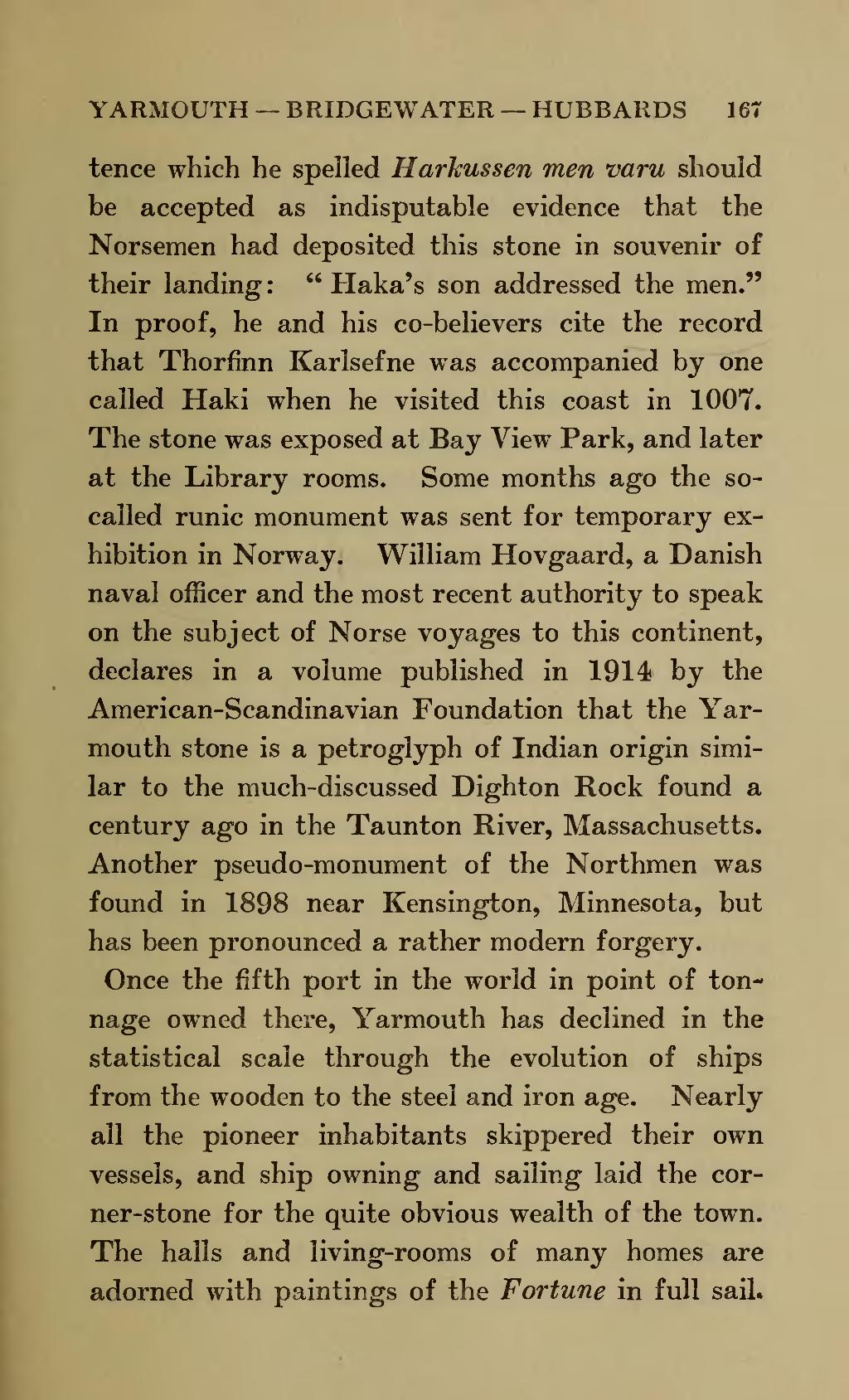tence which he spelled Harkussen men varu should be accepted as indisputable evidence that the Norsemen had deposited this stone in souvenir of their landing: "Haka's son addressed the men." In proof, he and his co-believers cite the record that Thorfinn Karlsefne was accompanied by one called Haki when he visited this coast in 1007. The stone was exposed at Bay View Park, and later at the Library rooms. Some months ago the so-called runic monument was sent for temporary exhibition in Norway. William Hovgaard, a Danish naval officer and the most recent authority to speak on the subject of Norse voyages to this continent, declares in a volume published in 1914 by the American-Scandinavian Foundation that the Yarmouth stone is a petroglyph of Indian origin similar to the much-discussed Dighton Rock found a century ago in the Taunton River, Massachusetts. Another pseudo-monument of the Northmen was found in 1898 near Kensington, Minnesota, but has been pronounced a rather modern forgery.
Once the fifth port in the world in point of tonnage owned there, Yarmouth has declined in the statistical scale through the evolution of ships from the wooden to the steel and iron age. Nearly all the pioneer inhabitants skippered their own vessels, and ship owning and sailing laid the corner-stone for the quite obvious wealth of the town. The halls and living-rooms of many homes are adorned with paintings of the Fortune in full sail.
